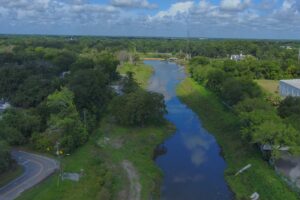Bird's the word on District lands
Feb. 29, 2024
Birding is a beloved pastime for many nature enthusiasts. It’s one of the easiest hobbies to start; all you have to do is step outside and start noticing the birds around you.
Some of the best bird viewing opportunities in the state can be found on St. Johns River Water Management District lands. The District purchases land to protect and preserve water resources, and while doing so, these lands help provide and conserve diverse habitats for wildlife. From properties with coastal marshes, lakes, rivers and isolated wetlands to maritime forests, pine flatwoods, sandhills, live oak hammocks and open fields, you have the chance to see everything from bald eagles and purple martins to snowy egrets and blue-winged warblers.
Lake Apopka North Shore is one of the most popular birding destinations and is known as a top “eBird” hotspot in Florida with over 377 recorded species. Bring the online bird checklist and try to spot as many as you can. With upland forests and freshwater swamps, Moses Creek Conservation Area is another prime spot to see a variety of wading birds, songbirds, woodland birds and birds of prey. The virtually treeless marsh in the Canaveral Marshes Conservation Area is home to numerous migratory and resident birds like black-bellied whistling ducks, roseate spoonbills, king rails, and great blue herons.
Several threatened and endangered birds can be found on District lands, offering a chance for both the seasoned avian enthusiast and the amateur observer to catch a glimpse of these protected species. The thousands of acres of open marsh in the Blue Cypress Conservation Area are ideal for snail kites, which require an open, clear-water habitat to support their hunting style. The pine forest of Hal Scott Regional Preserve and Park provides the perfect habitat for the red-cockaded woodpecker. They live exclusively in cavities the birds excavate into the trunks of live, old-growth pine trees. Florida scrub-jays, which specialize in surviving in the harsh environment of oak scrub communities, can be found in Buck Lake Conservation Area and Lake Monroe Conservation Area.
Are you ready to spot some feathered friends? Grab your binoculars and a field guide and start your birding journey on one of the many District properties.





